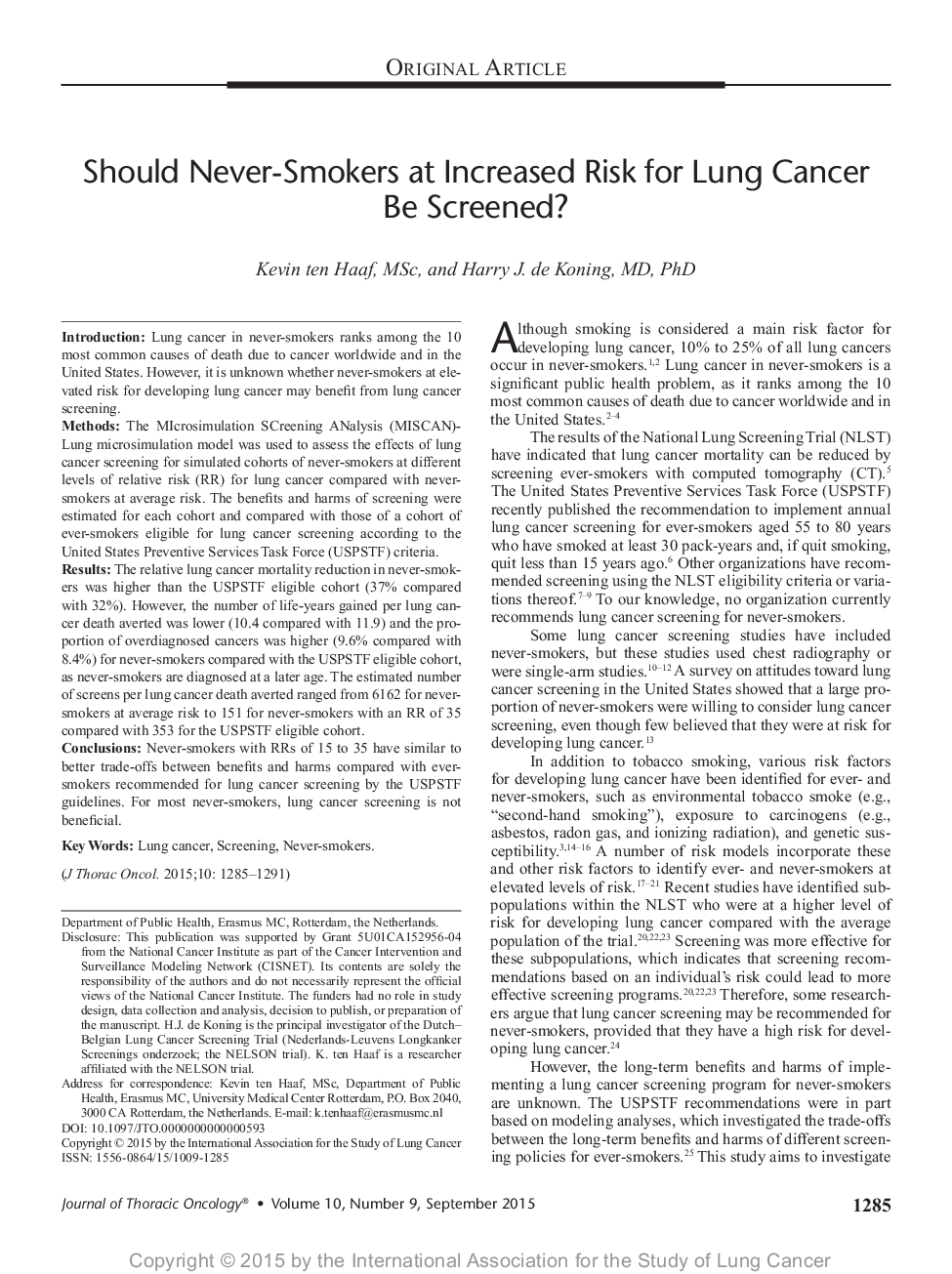| Article ID | Journal | Published Year | Pages | File Type |
|---|---|---|---|---|
| 6192778 | Journal of Thoracic Oncology | 2015 | 7 Pages |
IntroductionLung cancer in never-smokers ranks among the 10 most common causes of death due to cancer worldwide and in the United States. However, it is unknown whether never-smokers at elevated risk for developing lung cancer may benefit from lung cancer screening.MethodsThe MIcrosimulation SCreening ANalysis (MISCAN)-Lung microsimulation model was used to assess the effects of lung cancer screening for simulated cohorts of never-smokers at different levels of relative risk (RR) for lung cancer compared with never-smokers at average risk. The benefits and harms of screening were estimated for each cohort and compared with those of a cohort of ever-smokers eligible for lung cancer screening according to the United States Preventive Services Task Force (USPSTF) criteria.ResultsThe relative lung cancer mortality reduction in never-smokers was higher than the USPSTF eligible cohort (37% compared with 32%). However, the number of life-years gained per lung cancer death averted was lower (10.4 compared with 11.9) and the proportion of overdiagnosed cancers was higher (9.6% compared with 8.4%) for never-smokers compared with the USPSTF eligible cohort, as never-smokers are diagnosed at a later age. The estimated number of screens per lung cancer death averted ranged from 6162 for never-smokers at average risk to 151 for never-smokers with an RR of 35 compared with 353 for the USPSTF eligible cohort.ConclusionsNever-smokers with RRs of 15 to 35 have similar to better trade-offs between benefits and harms compared with ever-smokers recommended for lung cancer screening by the USPSTF guidelines. For most never-smokers, lung cancer screening is not beneficial.
